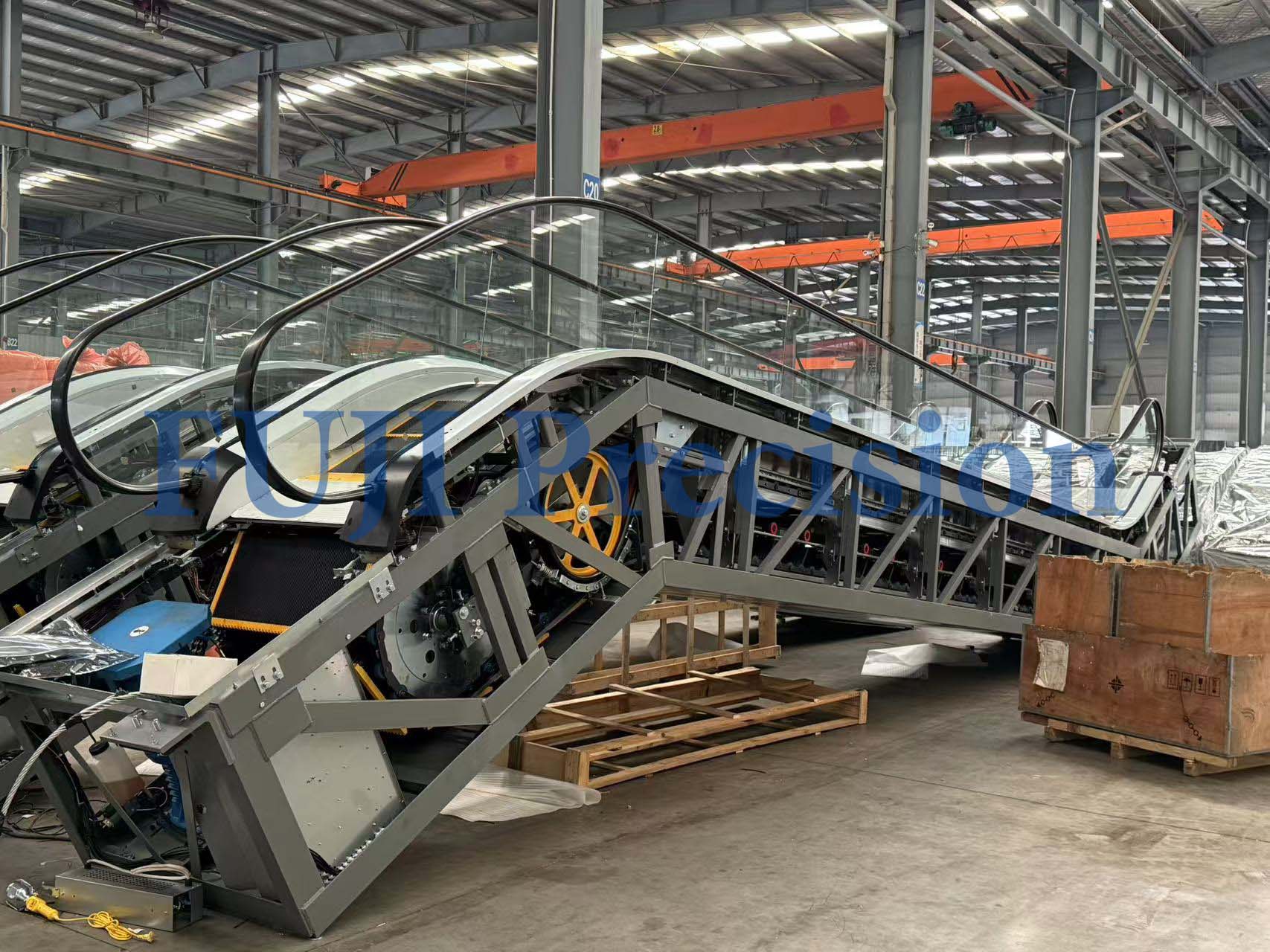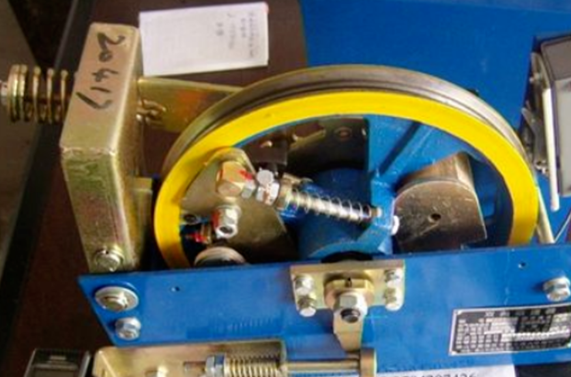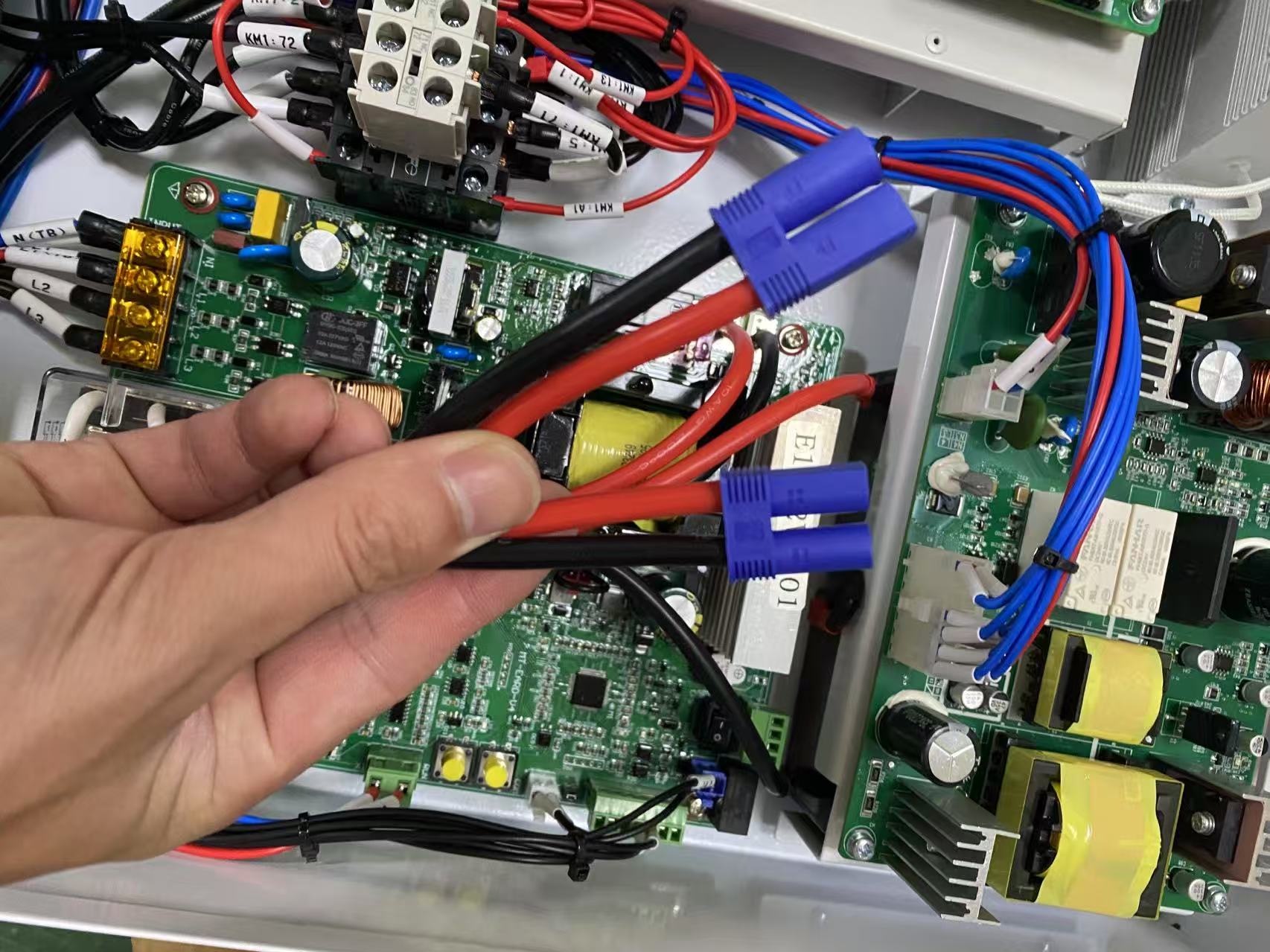ause analysis and treatment process of 6 typical elevator failure cases
Date:2025-09-22In recent years, more and more domestic elevators have been exported to foreign countries. During the period when I was providing after-sales technical services for elevators abroad, I encountered some typical elevator faults, which were solved through analysis. Below, I introduce the fault phenomena, fault analysis and treatment process of 6 typical elevator faults for reference by elevator maintenance personnel.
Cause analysis and treatment process of 6 typical elevator failure cases
1. Typical Elevator Failure Case 1
1.1 Failure Symptom: The elevator occasionally stops during express operation, causing the inverter to alarm and indicate an encoder fault. The elevator resumes operation after power is turned off and then on again, but the inverter alarm reappears after a period of operation.
1.2 Failure Cause Analysis: Some inverter fault alarms do not require a power outage to recover, recovering automatically after approximately two minutes. However, some fault alarms, such as encoder failure and inverter overload, only recover after a power outage. In the above fault, since the elevator can run at express speed but only occasionally issues an encoder alarm, loose encoder wiring is a more likely cause of the fault than encoder damage.
1.3 Troubleshooting: Inspection of the encoder cable revealed a loose connector, causing the encoder pulse signal to intermittently stop, causing the encoder to alarm and stop during operation. After re-tightening the encoder cable connector, the inverter alarm disappeared during express operation.
2 Typical Elevator Failure Case 2
2.1 Fault Symptom: After the elevator encoder self-learned, it reported a speed feedback error during up-travel and an inverter overload during down-travel.
2.2 Fault Cause Analysis: This speed feedback error is primarily related to the correct inverter parameter settings, encoder wiring, inverter and permanent magnet synchronous motor wiring, and whether the brake is properly engaged.
2.3 Troubleshooting Procedure: All inverter parameters related to the motor were checked; no abnormalities were found. The inverter and permanent magnet synchronous motor wiring was correct. Measuring the brake voltage in the control cabinet showed a starting voltage of 180V and a holding voltage of 117V, which were also normal. When the manual closing contactor and brake contactor were activated, the car was unable to move. It was suspected that the brake was not engaged, causing excessive resistance and the fault. The installer inspected the car from the top of the car to the motor and found that one of the two brake coils had been scraped off, indicating that only one brake was engaged and the other was inoperative. After repairing the damaged brake wire, both brakes opened normally, and the elevator resumed operation at maintenance speed. The installer re-performed the traction motor self-learning and observed a magnetic angle deviation of approximately 3degree. The elevator resumed normal maintenance operation, and the elevator fault was resolved.
3 Typical Elevator Failure Case 3
3.1 Fault phenomenon The elevator occasionally reports speed feedback error and abnormal elevator speed during normal operation.
3.2 Fault cause analysis The occurrence of this speed feedback error phenomenon is mainly related to whether the inverter parameter setting is normal, whether the encoder wiring is correct, whether the encoder is firmly fixed, and whether the encoder itself is stable.
3.3 Fault handling process First, check all the parameters related to the traction machine in the inverter and no abnormal parameters are found. Secondly, check whether the encoder is firmly fixed, so decide to replace an encoder cable to see if it is caused by the encoder cable. After a few days of normal operation of the elevator, it still reports the same fault, so decide to replace the encoder.
(1) Prepare tools: a set of hexagonal wrenches; a "one" screwdriver; an M10×70 bolt; the steel plate is made on site, the steel plate size is about 30mm×100mm; the bolts M10×50~80 can be used.
(2) Be sure to loosen the tension ring M2.5×5 bolt before disassembly.
(3) Disassembly of the encoder:
First remove the encoder back cover and unscrew the M5×50 bolt;
Screw the M10×70 bolt through the steel plate hole to the encoder, and pull out the encoder with both hands. Another method of disassembly is to use an M6×70 bolt with a diameter4×30 front end. Use an angle grinder on site to grind the front end of the bolt into diameter4×30, screw it onto the encoder and push the encoder out.
(4) Installation of the encoder:
Clean the encoder's tapered shaft and motor hole;
Check the encoder's clamping structure to ensure that the clamping mechanism is in a loose state;
Loosen the back cover screws and remove the back cover;
Insert the encoder's tapered shaft into the tapered hole of the rotating shaft, and connect the encoder to the rotating shaft with an M5×50 bolt. The required tightening torque is 5N m;
Turn the encoder. If it does not turn smoothly, check whether the bolt is installed skewed; then tighten the encoder's tensioning bolt. The required tightening torque is 1.05~1.25N m (recommended value).
Install the encoder wiring and the encoder rear cover for protection. After replacing the encoder, perform a magnetic angle self-learning again and observe that the magnetic angle deviation is less than 5degree. The elevator can now operate normally, and the elevator fault has been resolved.
4 Typical Elevator Failure Case 4
4.1 Fault Symptom: The elevator master controller was unable to operate after maintenance.
4.2 Fault Cause Analysis: Maintenance personnel discovered that the elevator was unable to operate after maintenance because the elevator master controller reported that it could not find the car top control module. The presence of the car top control module is crucial to the elevator's operation.
4.3 Troubleshooting Process: Inspection revealed that the car top control module was damaged, as burn marks were found on the DC 24V input power supply. There are two main causes of damage: one is the misdirection of high voltage (AC 220V or AC 110V) into the car control circuit's DC power supply, and the other is a short circuit between DC 24V2 and 0V2. Inspection of the elevator master controller in the machine room revealed two DC power supplies: DC 24V1 and 0V1 for the hoistway call control power supply, and DC 24V2 and 0V2 for the car control circuit power supply. If high voltage is mistakenly introduced, the car top control module and the elevator main controller will be damaged. Now the elevator main controller is not damaged. It can only be determined that the car control circuit power supply DC 24V2 and 0V2 are short-circuited, causing the car top control module to be damaged (the elevator main controller has undergone technical processing on the power board, so it will not be damaged even if the car control circuit power supply DC 24V2 and 0V2 are short-circuited). By checking the door area switch that shares the power supply with the car top control module, it was found that the door area switch was also damaged due to its own quality reasons, and caused the car control circuit power supply DC 24V2 and 0V2 lines to be short-circuited. At this point, the cause of the damage to the car top control module has been found. After replacing the door area photoelectric switch, the elevator can be repaired and operated normally.
5 Typical Elevator Failure Case 5
5.1 Fault phenomenon: The elevator can only call the elevator internally, but cannot call the elevator externally.
5.2 Fault cause analysis: The external call problem is related to the shaft communication module. The elevator master controller reports that it cannot find the shaft communication module.
5.3 Fault handling process: Go to the shaft to check the shaft communication module and find that the module is damaged by water. Find a new shaft communication module from the spare parts, replace it, and then activate the module:
(1) First, make sure that the elevator internal selection function is normal.
(2) Set the parameters on the elevator controller as follows: Settings/Net Installation/Floor Commissioning/Yes.
(3) Use internal selection to let the elevator run to the floor corresponding to pin 1 of the shaft communication module.
(4) When the elevator reaches the floor, wait for the internal selection button light to go out, then press the internal selection button for this floor and hold it for 1 to 2 seconds before releasing it. At this time, the indicator light on the internal selection button for this floor will flash.
(5) Press the up call button for this floor and hold it for 1 to 2 seconds before releasing it. At this time, the indicator light on the up call button for this floor will flash.
(6) Enter the car, press the flashing floor select button and hold it for 1-2 seconds before releasing it. At this point, the flashing floor select button and up call button will all go out.
(7) Finally, set the following parameters on the elevator main controller: Settings/Net Installation/Floor Cmmissioning/No. After completing the above operations, the elevator can make outbound calls normally.
6 Typical Elevator Failure Case 6
6.1 Fault Symptom: The elevator master controller reported that it could not find the floor location module.
6.2 Fault Cause Analysis: This phenomenon was primarily caused by a damaged floor location module.
6.3 Troubleshooting Procedure
On-site inspection revealed that the leveling plates for floors 1, 2, and 3 were all warped, and the two leveling switches on the car roof were also damaged. Two new leveling switches were replaced, and after adjusting the leveling plates for these three floors, the elevator resumed maintenance operation. However, the elevator master controller reported that it could not find the floor location module, preventing express operation. After replacing the new floor location module with the elevator master controller, the red light on the floor location module flashed, indicating that the elevator master controller could recognize it.



